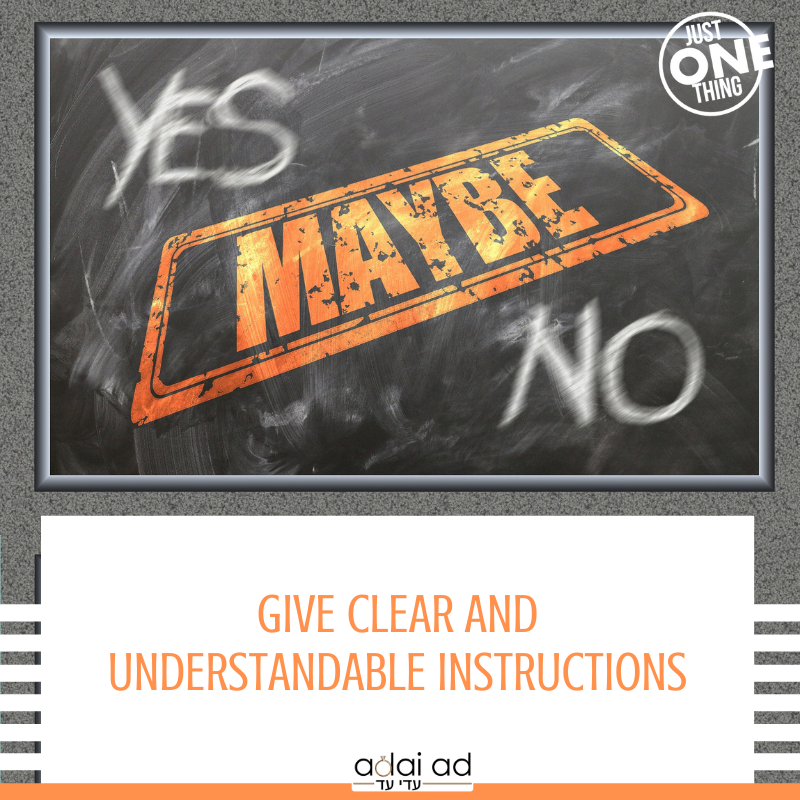Avoid confusion and disappointments. Give clear and understandable instructions.
Some quick pointers:
- Don’t assume they know what you mean; no one can read your mind. So be clear and specific. And concise, it’s hard to follow long winded instructions.
- Get straight to the point. Don’t hint at it. Don’t say, “The table needs to be set.” Say it fully, “Please set the table.” This leaves no room for ambiguity (or excuses).
- Tell, don’t ask. Instead of “Can you please set the table now?” say, “Please set the table now.” Btw, asking for something to be done ‘now’ can be frustrating. As possible, give a heads-up or a specific timeframe. What you consider as “soon” might be very different from the others in your home. “Please set the table by 12:00.”
- Give examples. Model what you want done. Put a complete setting on the table. (You might also have a pre-printed list of what should be on the table before the meal.)
- If possible, give alternatives and options. “Please buy X, but if they don’t have it please get Z.”
Remember, it is the end result that is important, not how it is done. If you are asking someone else to do something, let them do it in their own way.
Most importantly, thank them for doing it.


